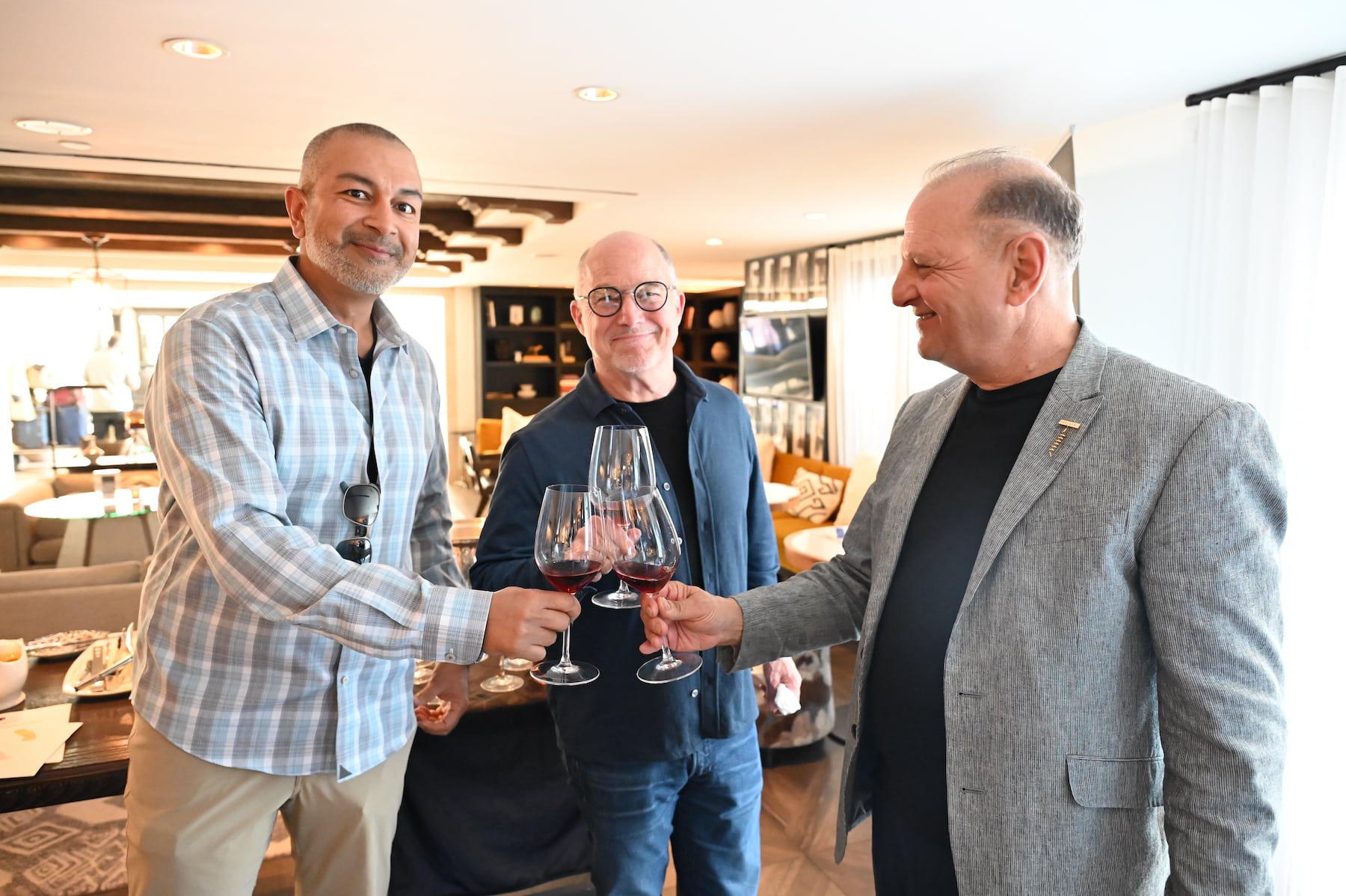Hidden Wineries in Sonoma County You Cannot Miss
Hidden Wineries in Sonoma County You Cannot Miss
Blog Article
Local Insights for Visiting Sebastopol Wineries
Understanding the nuanced vocabulary related to winery wine tasting is essential for each novices and seasoned connoisseurs alike. Each term brings to life the experience of tasting wine and might improve one’s appreciation of the many intricacies involved. Wine tasting is extra than just ingesting; it's an art that involves numerous senses and feelings.
To begin with, the term "nose" refers again to the aromas one detects when smelling the wine. This is an important step as a outcome of the bouquet sets the stage for the tasting experience. Notes of fruit, spice, earth, and wood might mingle, offering a glimpse of what the palate may verify. Understanding "nosing" the wine can dramatically elevate one's sensory journey.
Another key aspect is the term "body." The body of the wine describes its weight and fullness on the palate. A full-bodied wine has a robust presence and tends to linger longer after swallowing. Conversely, light-bodied wines might feel more delicate and refreshing. Recognizing the body helps tasters assess the wine's structure and balance.
Craft Your Journey Through Sonoma's Wine Regions
The idea of "tannins" is vital in purple wine tasting. Tannins are compounds derived from grape skins, seeds, and stems, contributing to a wine's texture and aging potential. High tannin wines typically lead to a dry mouthfeel, while decrease tannin ranges yield a smoother experience. This distinction is particularly essential when pairing wines with food, as tannins can both complement or conflict with certain dishes.
In addition to tannins, "acidity" plays a big function within the wine tasting experience. Acidity provides wine its crispness and liveliness - Top Wine Tasting Experiences in the Russian River Valley. Wines with greater acidity tend to be refreshing and energizing, making them wonderful companions for a wide selection of meals. Recognizing acidity can drastically improve one’s food-pairing capabilities and general tasting enjoyment.
When delving into the flavor profile of a wine, one might encounter the term "finish." The finish refers back to the aftertaste that lingers within the mouth after swallowing. A lengthy finish is commonly associated with high-quality wines, because it signifies complexity and depth. A short end may suggest a much less complicated wine. Understanding the means to consider the end can reveal much about a wine's character.
Exploring the "vintage" is also integral to wine tasting terminology. The vintage denotes the year during which the grapes were harvested. Completely Different years can yield vastly totally different outcomes due to variations in local weather conditions. For occasion, a hot summer season can produce more concentrated flavors, while a cooler 12 months might yield more refined, nuanced wines. Understanding vintage allows for a deeper appreciation of a wine’s origin and potential.
Best Wine Tasting Rooms in California
The term "terroir" encompasses the geographical and environmental components that contribute to a wine's unique character. Factors similar to soil kind, local weather, elevation, and topography all play a task in the flavor and high quality of the wine. This connection to put helps one understand why wines from completely different regions can style so distinctively totally different, even when made from the same grape selection (The Best Wineries for Private Tours in Sebastopol).

When participating with wines, the phrase "leg" refers again to the droplets that kind on the within of the glass after swirling. These droplets can indicate the wine's alcohol content and viscosity. While observing the legs may not directly relate to the wine’s style, it provides to the overall experience and intrigue of wine tasting less transparent.
Vineyard Adventures in Sonoma for Couples
A more particular term that will come up during tastings is "oak." The influence of oak barrels on wine can impart flavors corresponding to vanilla, toast, or spice. The degree of oak growing older can differ broadly amongst wines, affecting each aroma and style. Understanding oak therapy supplies insights into the winemaker’s choices and the resulting complexity of the wine.
In wine tasting, one might also hear the term "palate." The palate refers to the general style experience within the mouth. This encompasses sweetness, bitterness, acidity, and body. A well-balanced palate is important for a harmonious tasting experience, and recognizing any imbalances helps assess the quality of the wine.
The experience of wine tasting is tremendously enriched by understanding the terminology that accompanies it. Every term serves a purpose, enhancing the ability to convey thoughts and emotions in regards to the wine one's experiencing. This vocabulary bridges communication between tasters, sommeliers, and winemakers alike.

To totally get pleasure from wine tasting, it is important to interact all senses. The sight of the wine, its colour, and clarity can provide insight into its age and high quality. Swirling the wine releases aromas that heighten the olfactory experience, whereas the precise tasting permits for a whole analysis of the wine's profile.
Top Chardonnay from Sebastopol Vineyards You Must Try
In conclusion, understanding the detailed rationalization of winery wine tasting terminology significantly enhances the experience of tasting. Every term invitations the taster to engage extra deeply with the wine, encouraging connections to the senses, the winemakers, and the lands the place find this the grapes are grown. This nuanced vocabulary creates a richer, extra fulfilling wine tasting experience.
- Aroma refers back to the scents released by the wine, which can point out its grape selection and affect the tasting experience.
- Tannins are pure compounds present in grape skins, seeds, and stems, contributing to the wine's structure and aging potential.
- A finish, or aftertaste, is the lingering flavor sensation that is still on the palate after swallowing, typically a key indicator of high quality.
- Physique describes the burden and fullness of wine within the mouth, generally categorized as light, medium, or full-bodied.
- Terroir denotes the unique environmental characteristics of a vineyard that affect the taste and quality of the wine, including soil sort and local weather.
- Acidity is a crucial element that contributes to a wine's freshness and stability, impacting its growing older functionality and total flavor profile.
- Vintage signifies the 12 months grapes had been harvested and performs a big position in figuring out the wine's characteristics, reflecting specific climatic conditions.
- Decanting involves pouring wine from its bottle into one other vessel, allowing it to aerate and enhancing its flavors and aromas.
- A corked wine could additionally be tainted by a faulty cork, resulting in musty or off-putting flavors that detract from the wine's meant profile.
- The term “legs” refers to the droplets that cling to the inside of a glass after swirling, often associated with the wine's alcohol content material and viscosity.undefinedWhat is the that means of "nostril" in wine tasting?undefinedThe "nose" refers back to the aroma profile of the wine, which is detected through the sense of smell. It Is a vital facet of wine tasting, as aromas can reveal a lot about the grape variety, winemaking course of, and growing older.
How should I properly style wine?undefinedTo style wine effectively, comply with these steps: observe the colour, swirl the wine to aerate it, take a gentle sniff to capture the aromas, sip and let it coat your palate, and finally, note the end. This strategy helps in appreciating the wine’s complexity.
What are "tannins" and how do they affect wine?undefinedTannins are pure compounds found in grape skins, seeds, and stems that contribute to a wine's structure and astringency. They can create a drying sensation within the mouth, and they additionally play a job in the wine's growing older potential.
Navigating Sebastopol's Vineyards and Wineries 95407
What does the term "stability" imply in wine tasting?undefinedStability refers back to the concord between the totally different parts of a wine, similar to acidity, sweetness, alcohol, tannin, and flavor depth. A well-balanced wine may have every of these components supporting one another somewhat than overpowering the others.
What is the significance of "terroir" in wine tasting?undefinedTerroir encompasses the environmental factors—such as soil, local weather, and geography—that influence the traits of the wine produced in a particular area. Understanding terroir helps tasters appreciate the distinctive qualities that completely different regions impart to their wines.
What does "vintage" imply and why is it important?undefined"Vintage" signifies the yr when the grapes had been harvested. It is crucial because it impacts the wine’s high quality and characteristics, as climate conditions through the rising season can significantly affect flavor profiles and aromatics.
What are "legs" and what do they signify?undefined"Legs" discuss with my sources the droplets that type and run down the within of a glass after swirling wine. While they'll point out alcohol content and viscosity, they don't determine quality—this is extra about personal perception of richness.
Spontaneous Wine Tastings: Where to Go in Sonoma 95404
What does "full-bodied" imply versus "light-bodied"?undefined"Full-bodied" wines are rich, dense, and infrequently have greater alcohol content and complicated flavor profiles, whereas "light-bodied" wines are more delicate and refreshing with a decrease alcohol content. This distinction helps tasters understand the anticipated weight and mouthfeel of the wine.
How can I identify fruit flavors in wine?undefinedTo establish fruit flavors, think about the aroma and taste profiles. Swirl the wine, inhale deeply to seize the bouquet, and focus on specific traits. Familiarity with typical fruit profiles of various grape varieties can improve this identification process.
What is "end" in wine tasting?undefinedThe "finish" refers to the aftertaste that lingers in the mouth after swallowing. A lengthy, complicated end is usually an indication of high quality in a wine, as it displays the depth of flavor and overall craftsmanship within the winemaking process. Report this page